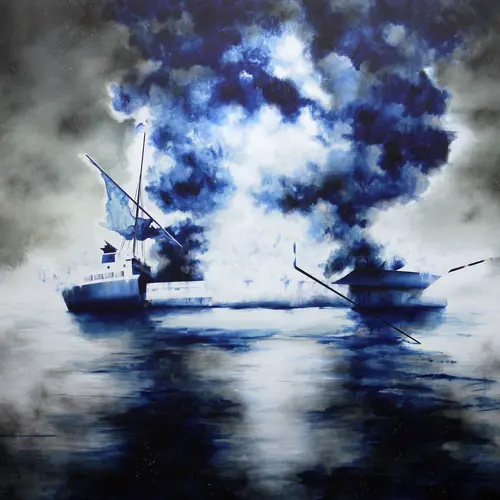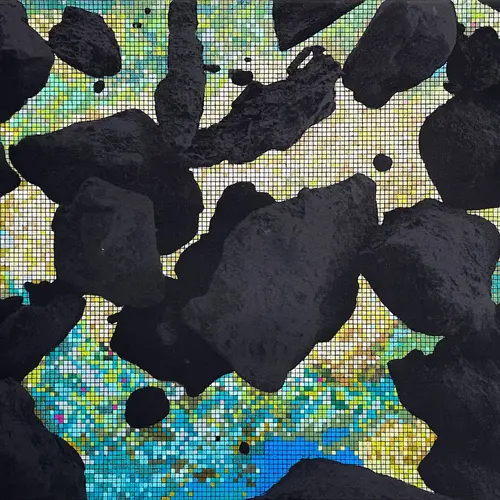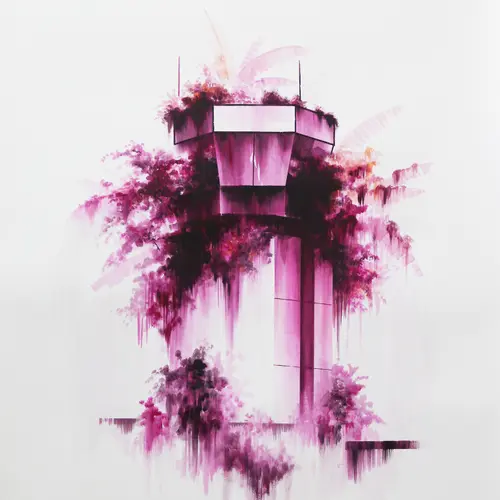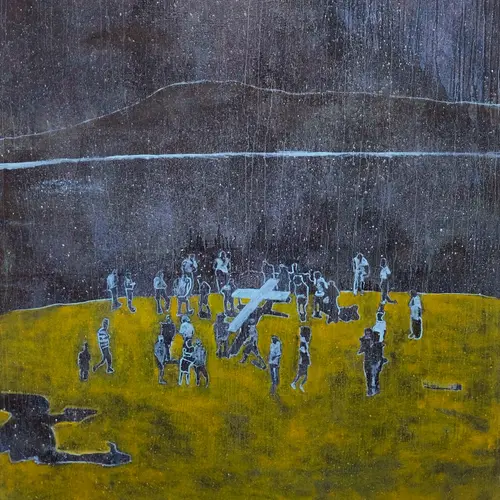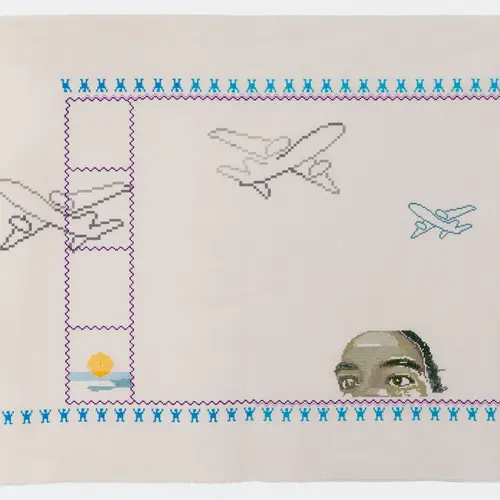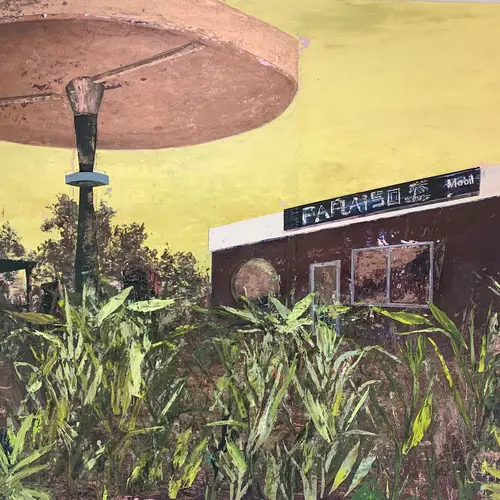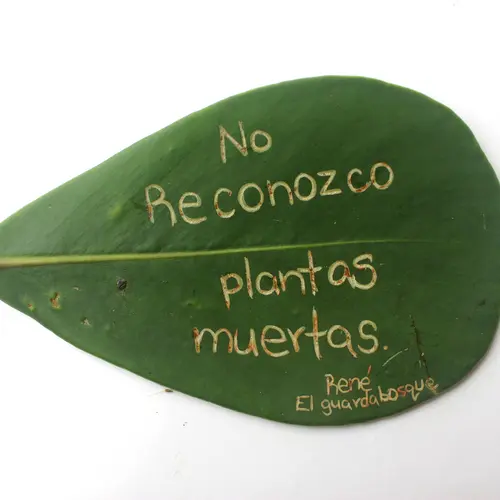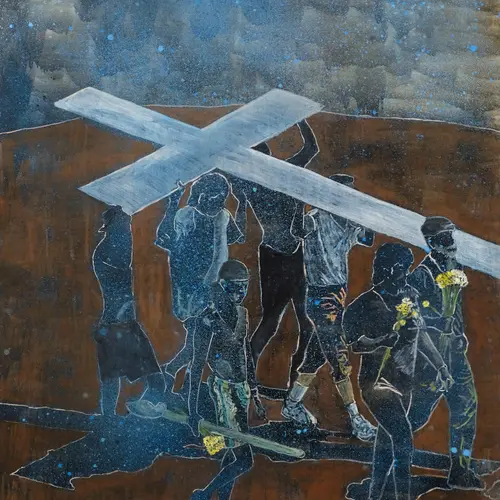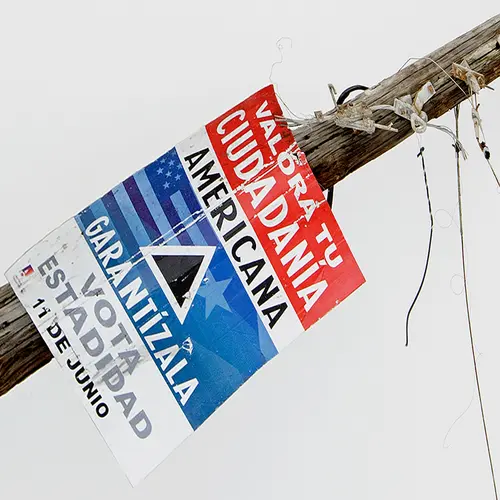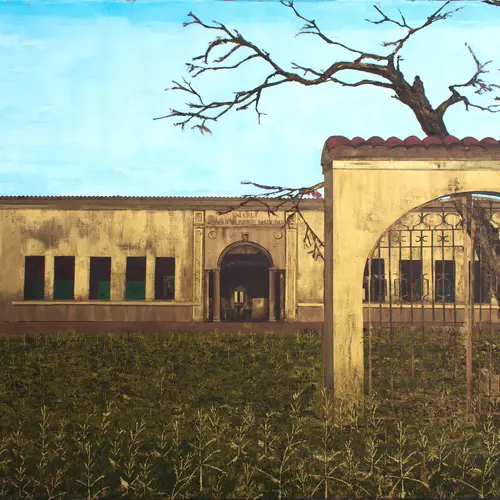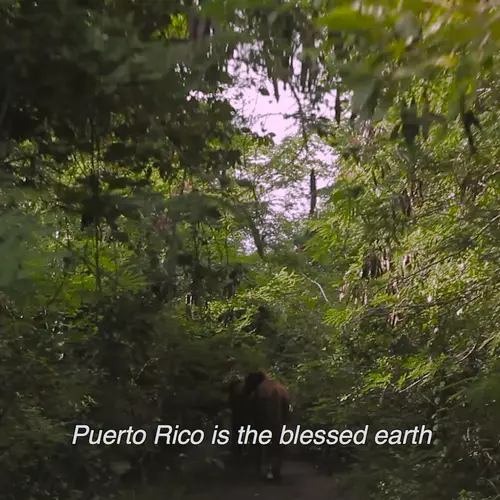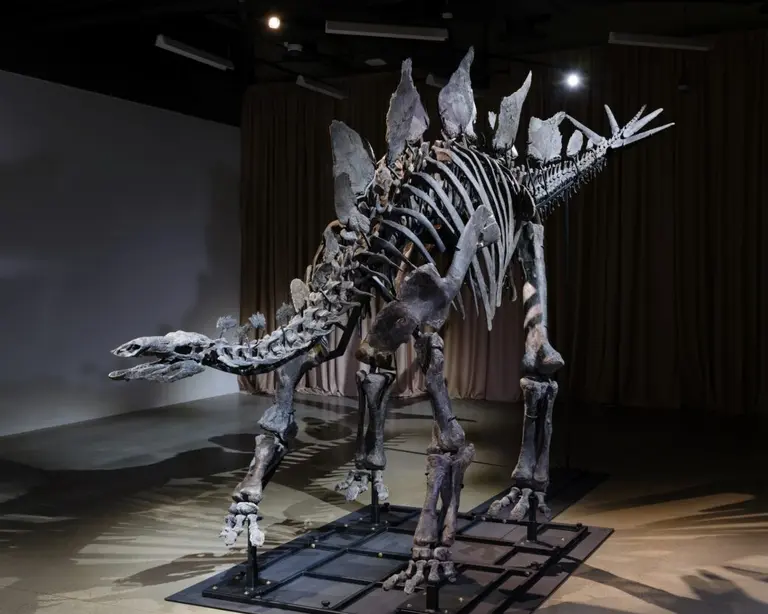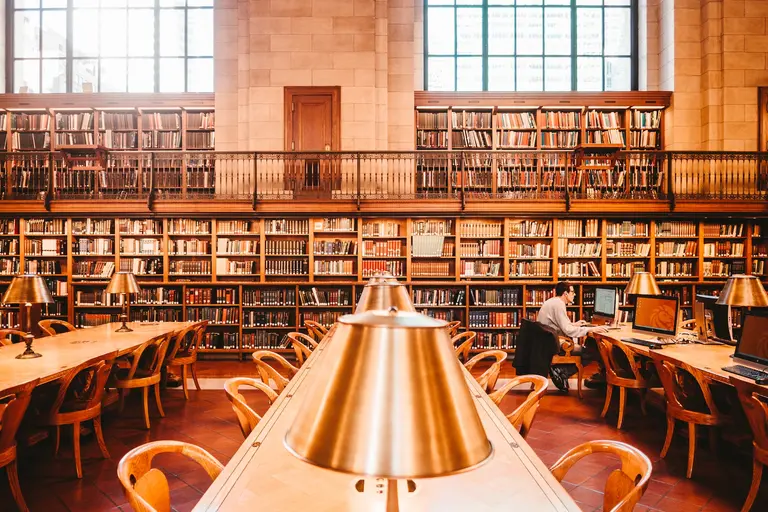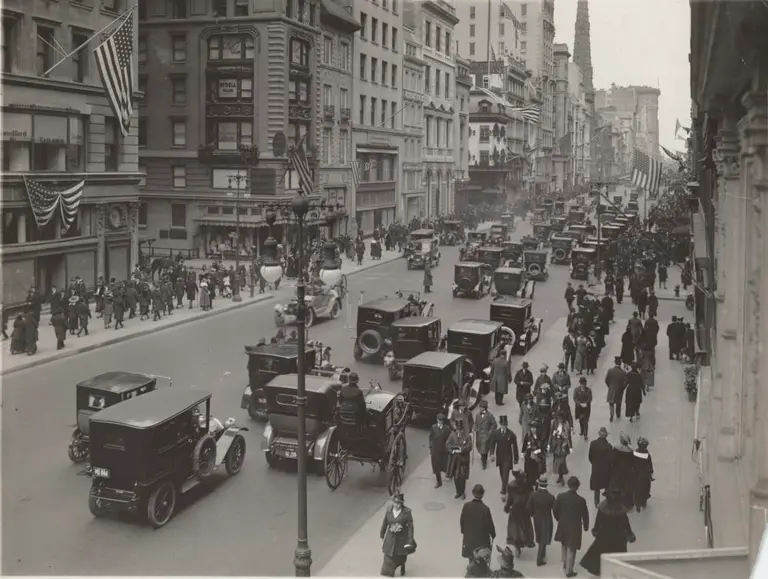The first survey of Puerto Rican art in a major U.S. museum in 50 years will open in NYC
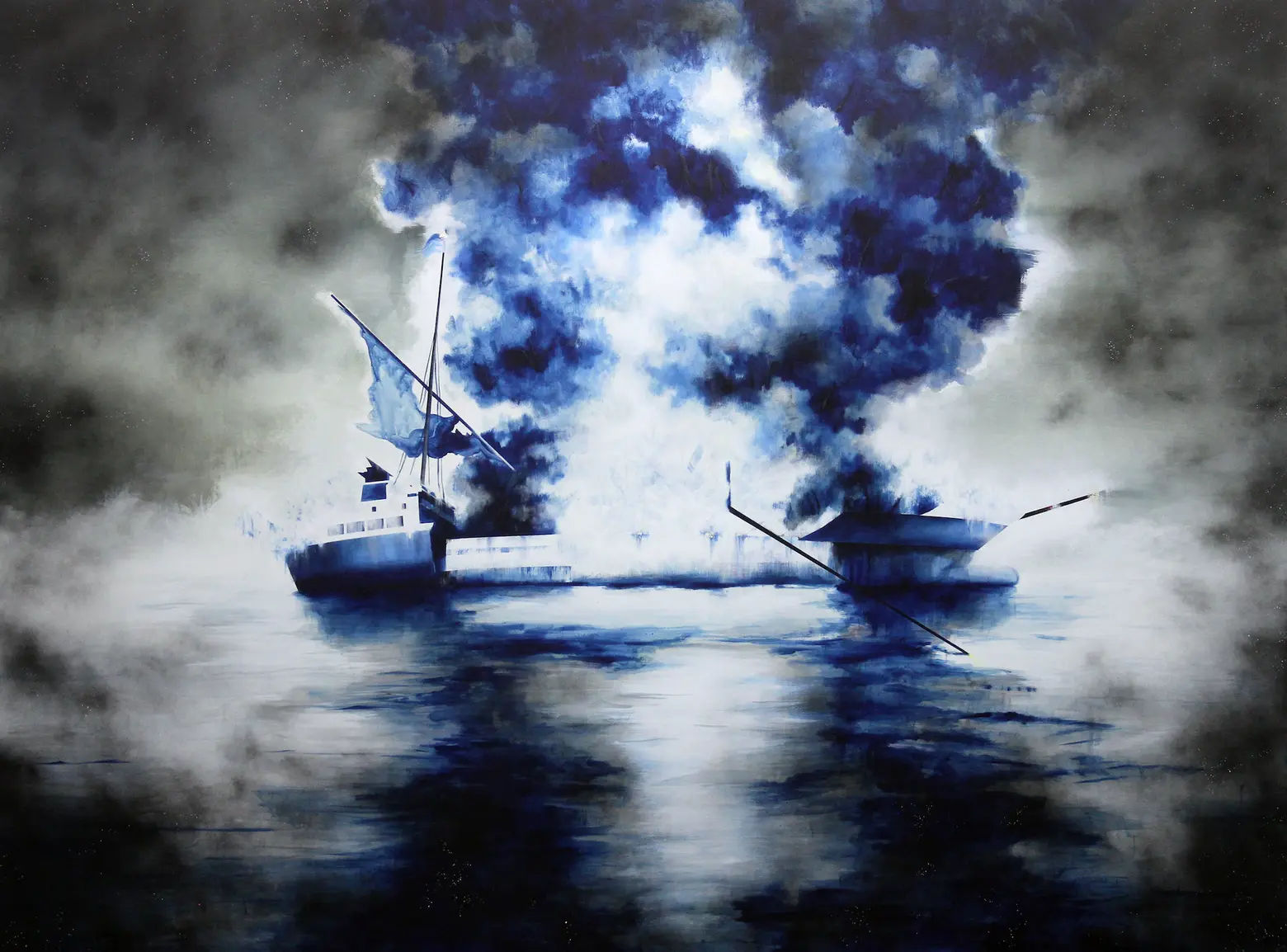
Gamaliel Rodríguez, Collapsed Soul, 2020–21. Ink and acrylic on canvas, 84 × 112 in. (213.3 × 284.5 cm). © 2021 Gamaliel Rodríguez. Courtesy of the artist and Nathalie Karg Gallery NYC. Photograph by Gamaliel Rodríguez
An exhibition opening at the Whitney Museum of American Art this month is the first survey of contemporary Puerto Rican art presented in a major United States museum in almost 50 years. Titled “no existe un mundo poshuracán: Puerto Rican Art in the Wake of Hurricane Maria,” the exhibit is made up of work from 20 intergenerational artists who explore the years since Hurricane Maria devastated the island in 2017 and respond to the political, social, and environmental factors connected to the disaster.
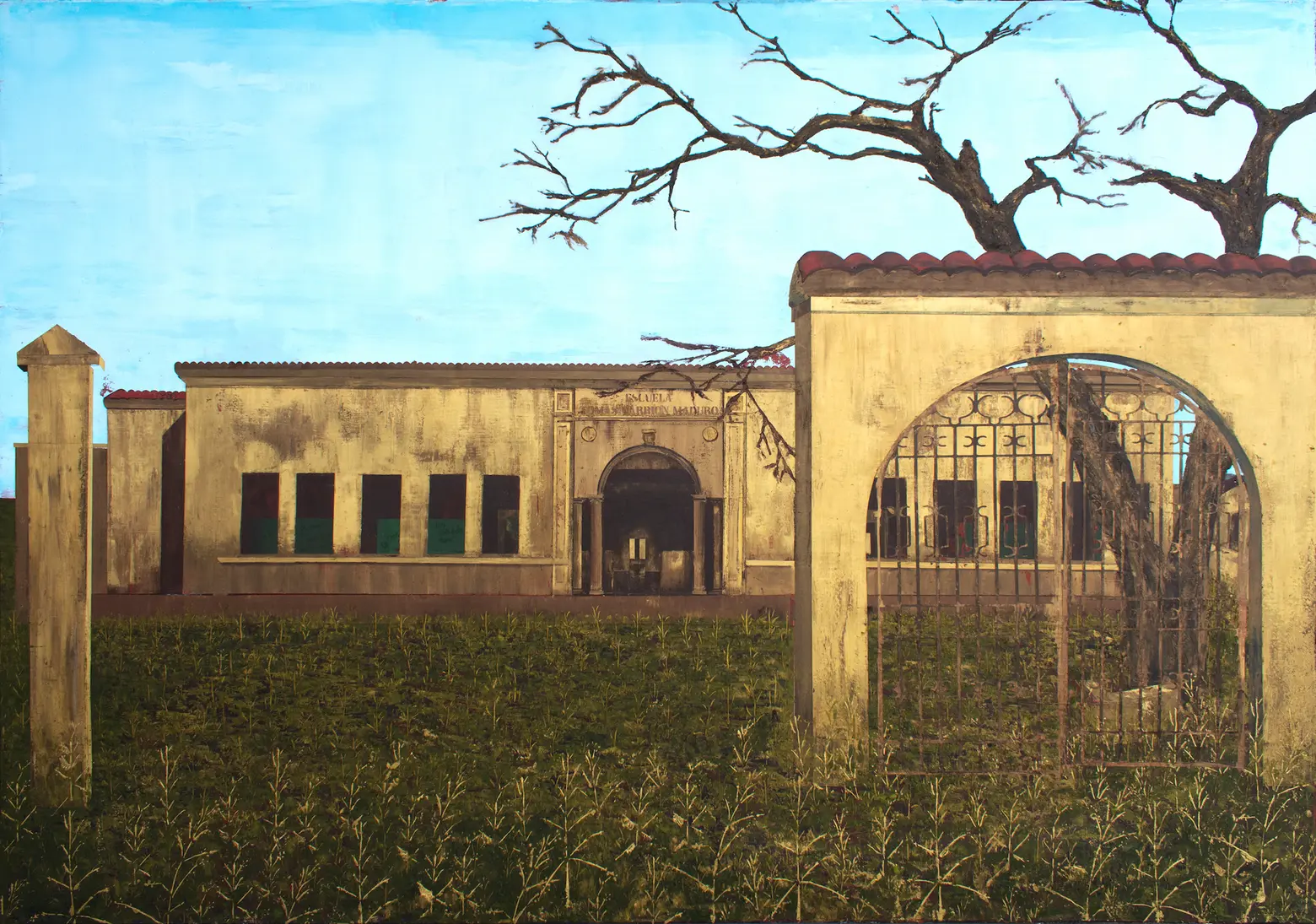 Rogelio Báez Vega, ID. Escuela Tomás Carrión Maduro, Santurce, Puerto Rico—New on the Market, 2021. Oil, beeswax, and gold pigment on canvas, 60 × 84 in. (152.4 × 213.4 cm). Courtesy of the artist.
Rogelio Báez Vega, ID. Escuela Tomás Carrión Maduro, Santurce, Puerto Rico—New on the Market, 2021. Oil, beeswax, and gold pigment on canvas, 60 × 84 in. (152.4 × 213.4 cm). Courtesy of the artist.
Hurricane Maria hit Puerto Rico on September 20, 2017. the devastation to the island was exacerbated due to pre-existing weaknesses in its infrastructure. The years following were marked by further instability, including a political scandal that saw the removal of the island’s Gov. Ricardo Roselló in 2019 and a series of earthquakes that destroyed many homes and buildings on the island’s southern side.
The island’s recovery is ongoing and has been stalled by the Covid-19 pandemic, ongoing electrical blackouts, school closures, and rising housing costs created by gentrification.
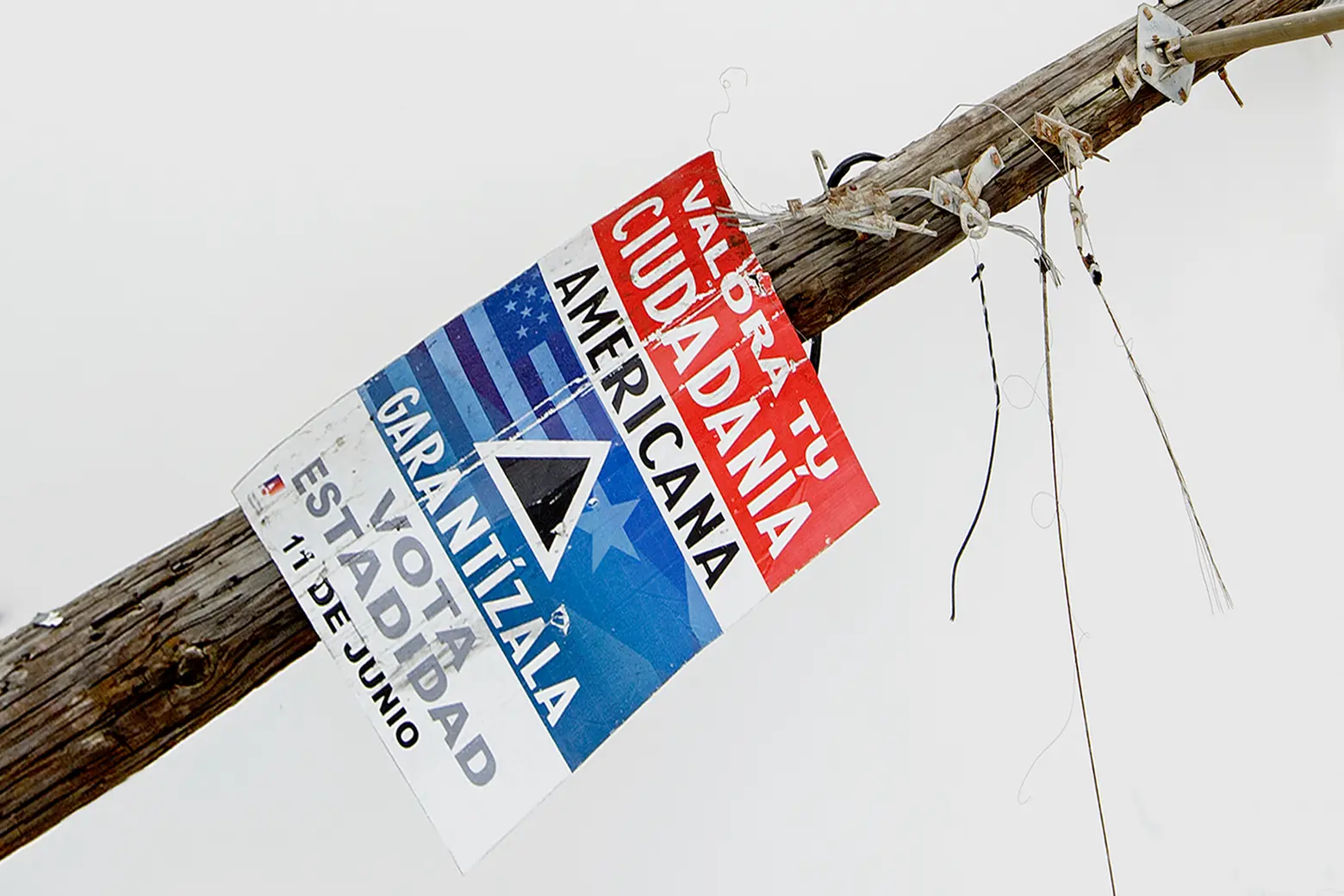 Gabriella Torres-Ferrer, Untitled (Valora tu mentira americana) (detail), 2018. Hurricane-ravaged wooden electric post with statehood propaganda, 116 × 118 × 122 in. (294.6 × 299.7 × 309.9 cm). Private collection; courtesy of the artist and Embajada, San Juan.
Gabriella Torres-Ferrer, Untitled (Valora tu mentira americana) (detail), 2018. Hurricane-ravaged wooden electric post with statehood propaganda, 116 × 118 × 122 in. (294.6 × 299.7 × 309.9 cm). Private collection; courtesy of the artist and Embajada, San Juan.
Over a variety of mediums, including videos, paintings, performances, poetry, and installations, “no existe un mundo poshuracán” analyzes the storm’s effect on the “very structure of Puerto Rico’s politics, culture, and society,” according to a press release.
The exhibition is split into five separate thematic sections: fractured infrastructures, critiques of tourism, processing, grieving, and reflecting, ecology & landscapes, and resistance and protest.
“The artists in this exhibition challenge us to understand the historical, physical, and political forces that have shaped Puerto Rico, and to see both our own responsibility and vulnerability,” Adam D. Weinberg, the Alice Pratt Brown Director of the Whitney Museum, said.
“Puerto Rico after Hurricane Maria is a harbinger of things to come for those who are most vulnerable, not just in the Caribbean, but worldwide.”
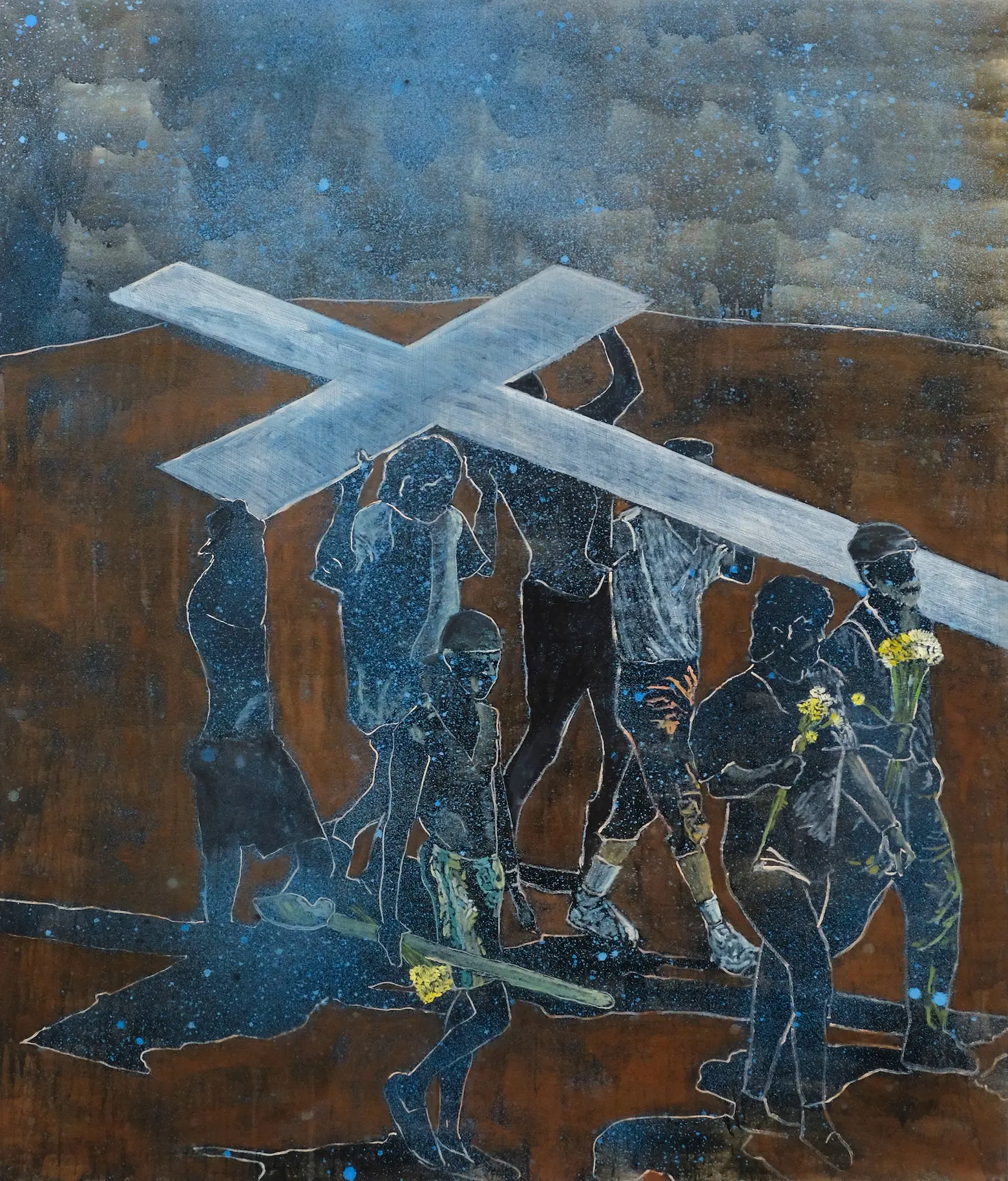
Armig Santos, Yellow Flowers, 2022. Oil on linen, 84 × 72 in. (213.4 × 182.9 cm). Collection of the artist; courtesy of the artist.
“‘No existe un mundo poshuracán’ proposes that imagining a new Puerto Rico is absolutely and resolutely the purview of artists,” Marcela Guerrero, one of the exhibition’s organizers, said.
“The future of self-determination is inherently a creative act. Art can be the medium of a post-hurricane, post-austerity, post-earthquake, and post-pandemic world. This exhibition is a call to see the living and an invitation to pay tribute to the dead.”
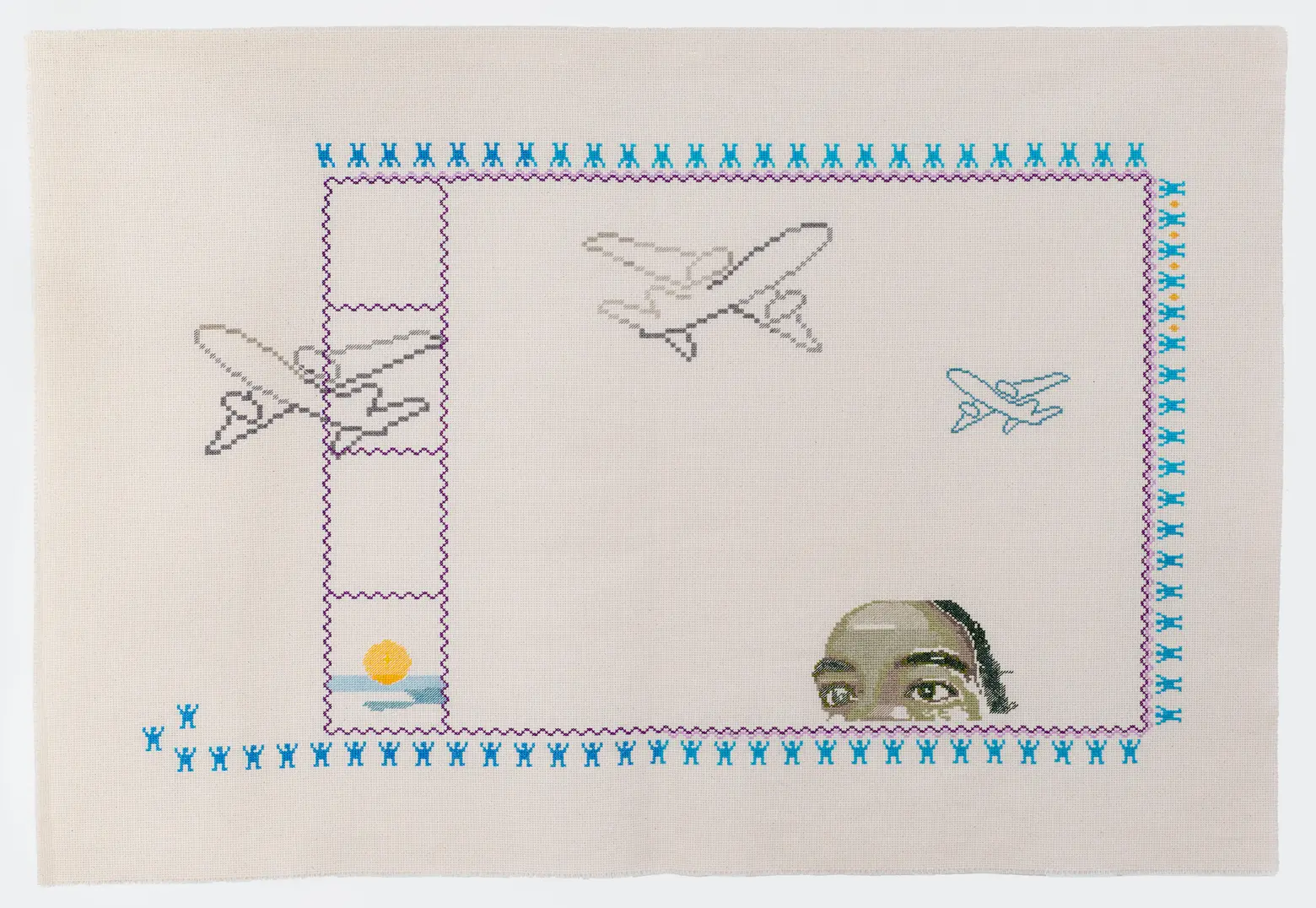 Lulu Varona, Ir y venir, 2021. Cotton thread embroidered on Aida cloth, 25 × 37 in. (63.5 × 94 cm). Collection of Jorge Garcia
Lulu Varona, Ir y venir, 2021. Cotton thread embroidered on Aida cloth, 25 × 37 in. (63.5 × 94 cm). Collection of Jorge Garcia
The artists featured in the exhibition are Candida Alvarez, Gabriella N. Báez, Rogelio Báez Vega, Sofía Córdova, Danielle De Jesus, Frances Gallardo, Sofía Gallisá Muriente, Miguel Luciano, Javier Orfón, Elle Pérez, Gamaliel Rodríguez, Raquel Salas Rivera, Gabriela Salazar, Armig Santos, Garvin Sierra Vega, Edra Soto, Awilda Sterling-Duprey, Yiyo Tirado Rivera, Gabriella Torres-Ferrer, and Lulu Varona.
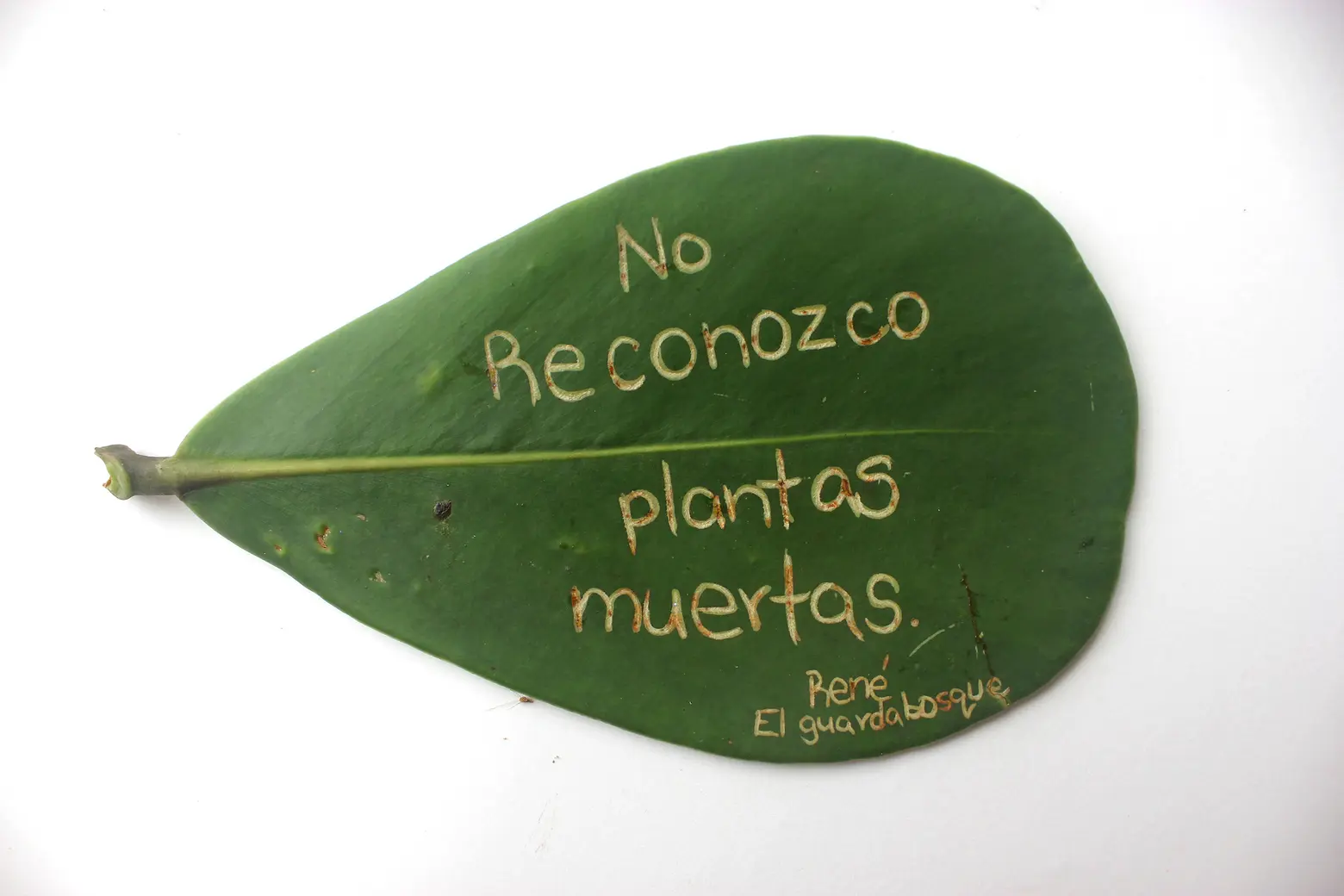 Javier Orfón, Bientéveo, 2018-2022. Inkjet print, 97 × 176 in. (246.4 × 447 cm). Collection of the artist; courtesy Hidrante, San Juan.
Javier Orfón, Bientéveo, 2018-2022. Inkjet print, 97 × 176 in. (246.4 × 447 cm). Collection of the artist; courtesy Hidrante, San Juan.
The exhibition’s title is roughly translated as “a post-hurricane world doesn’t exist,” and is taken from a poem by Puerto Rican poet Raquel Salas Rivera. The poem is one of the pieces featured in the collection as an artwork, according to a press release.
Topics addressed throughout the collection of art include the trauma created by deteriorating infrastructures, the destruction of ecological histories and landscapes, loss, reflecting, and grieving, and more.
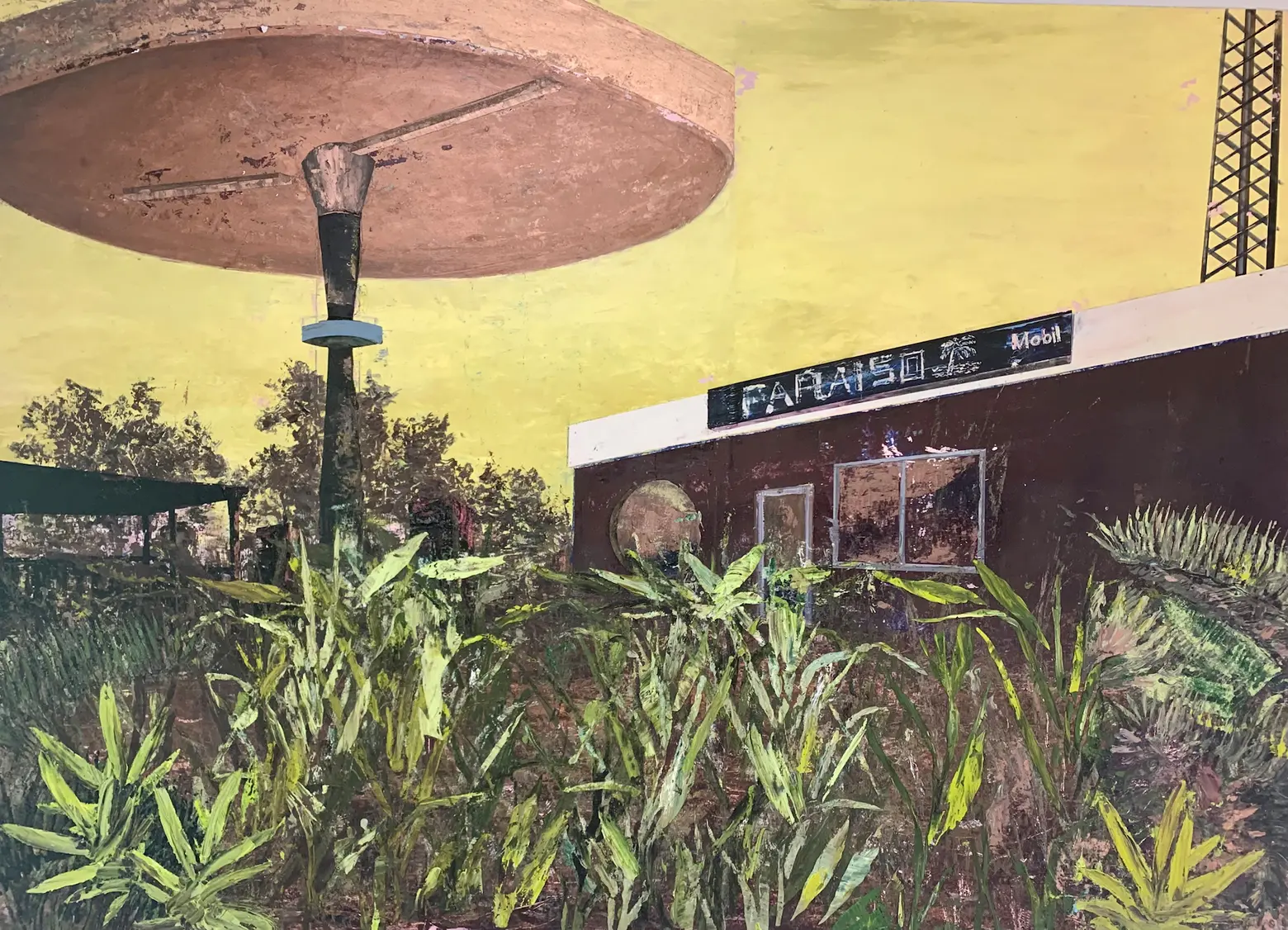 Rogelio Báez Vega, Paraíso Móvil, 2019. Oil on canvas, 55 × 70 in. (139.7 × 177.8 cm). Private collection. Image courtesy of the artist.
Rogelio Báez Vega, Paraíso Móvil, 2019. Oil on canvas, 55 × 70 in. (139.7 × 177.8 cm). Private collection. Image courtesy of the artist.
Free virtual and in-person programming will be hosted alongside the exhibition, including in-depth talks with the artists who will delve into the themes and questions explored in their works. Those interested in attending can learn more here.
“No existe un mundo poshuracán” is organized by Marcela Guerrero, Jennifer Rubio Associate Curators, with Angelica Arbelaez, Rubio Butterfield Family Fellow, and Sofía Silva, former Curatorial & Education Fellow in US Latinx Art.
The exhibition is running from November 23 through April 23, 2023. Timed tickets can be purchased here.
RELATED:
